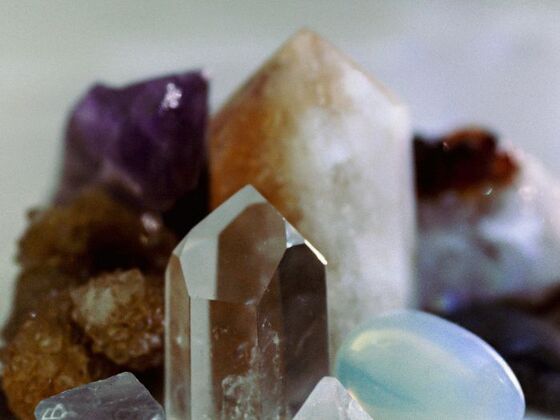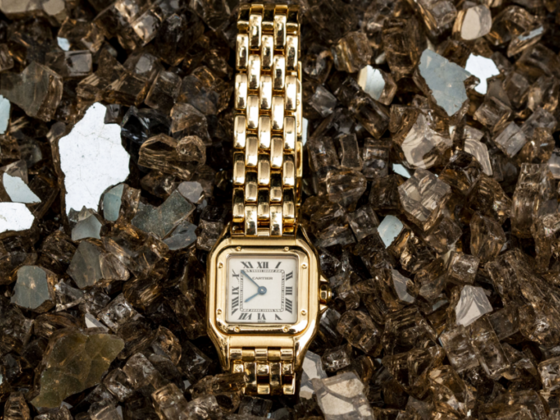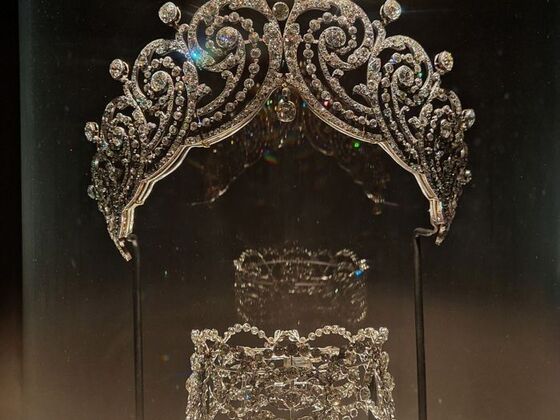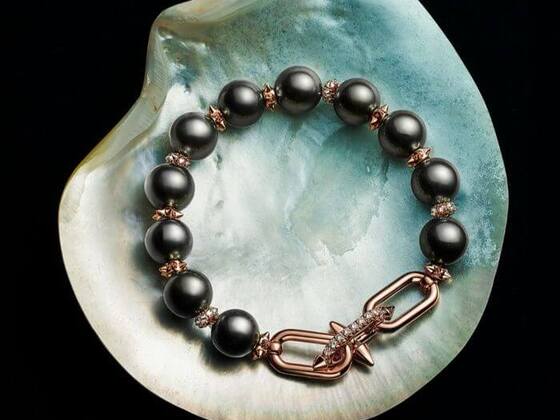How Instagram and TikTok Made Minerals a Design Trend
Crystals in home decor are trending. They are no longer hidden in the cabinets of rock collectors or sold exclusively in New Age shops. They have moved into mainstream interiors, showing up on coffee tables, in home offices, and across carefully styled Instagram grid posts. The shift is not accidental. Social media has acted as a powerful catalyst, transforming minerals into must-have design elements. Instagram’s love of serene shelfies and TikTok’s quick interior transformations have together propelled crystals from mystical curiosity to household décor staples.
The cultural embrace of crystals speaks to several converging lifestyle currents: the pursuit of wellness, the craving for authenticity and natural textures in interiors, and the online appetite for visually striking objects. For anyone asking why crystals are trending in home décor, this article dives into the aesthetic appeal, social media influence, popular minerals featured, sustainability debates, and styling tips that define the phenomenon. By the end, you will see how the rise of Instagram and TikTok has crystallised, quite literally, a new chapter in design culture.
The Social Media Spark: From Grid Aesthetics to Viral Videos
The story of crystals’ ascent in décor cannot be told without social platforms. Instagram set the scene first. Aesthetic-conscious users partnered rose quartz towers with minimalist furniture, houseplants, and curated coffee tables. These images resonated because they simultaneously suggested luxury and accessibility—safe indulgence in a polished lifestyle.
“Shelfie” culture became instrumental. Posting shelves stacked with plants, books, ceramics, and the sparkle of a selenite wand communicated not only design taste but also a sense of balance and tranquillity. Each object in the image carried both visual and symbolic weight. Crystals proved photogenic thanks to their translucency, saturated hues, and ability to catch natural light.
The Rise of TikTok
Where Instagram curated, TikTok amplified. On TikTok, the format favoured speed. Users showcased room transformations where sliding in an amethyst geode delivered the satisfying “reveal” moment. Crystal hauls trended, with users unpacking boxes of quartz clusters live on camera. Others tapped into ASMR subcultures, filming the gentle tap of nails on polished agate or the soft sound of crystals being brushed.
Both platforms rewarded these posts algorithmically because they held viewers’ attention. Vibrant colours, satisfying textures, and aesthetic symbolism made crystals ideal candidates for viral sharing. What once required flipping through design magazines was now circulating daily in TikTok’s endless loop of design micro-trends.
The Appeal of Crystals in Interiors
Why did people respond with such enthusiasm? Crystals answer a broad and overlapping set of desires: visual, tactile, and emotional.
Aesthetic resonance of crystals in home decor
In an era where many people want their homes to appear photo-ready, crystals function almost like “instant styling.” Their polished surfaces reflect natural light, working as tiny beacons that soften a room’s atmosphere. The colour palette is another draw. Amethyst offers vivid lavender tones, while smoky quartz delivers moody sophistication. Rose quartz injects gentle romance without overwhelming a neutral room.
Wellness symbolism
Even those who do not fully endorse metaphysical beliefs often appreciate the suggestion of calmness and balance. Rose quartz on a nightstand feels like an emblem of nurture, whether or not one associates it with “love energy.” Crystals give spaces what researchers in environmental psychology call “symbolic meaning”; they communicate intention.
Tactile presence
Unlike synthetic décor objects, crystals maintain a direct connection to the earth. Their textures range from smooth to jagged, polished to raw, inviting touch. They stand out from manufactured décor items and appeal to the growing appetite for authenticity in design.
Alignment with broader natural-material trends
Just as plants, reclaimed wood, marble countertops, and terrazzo tiles have surged, crystals represent another way to bring nature indoors. They are sculptural and functional simultaneously, bridging geology with artistry.
In essence, they allow a space to embody the dual aspirations of calm and curated aesthetics, both of which define social media-driven design trends.
Popular Crystals in Home Decor
When homeowners and influencers ask what crystals are best for home décor, a handful consistently appear across feeds and product lines.
- Rose Quartz – Known as the “love stone,” rose quartz doubles as décor and a symbolic charm. Its translucent pink hue works well with gold, cream, or grey colour palettes. On Instagram, it often appears styled with candles and fresh flowers.
- Amethyst – Deep purples or lighter lilacs bring depth to minimalist interiors or meditation corners. Amethyst geodes became iconic in room tours, anchoring corners or coffee tables with dramatic visual weight.
- Selenite – Long, luminous rods of selenite complement minimalist, Scandi interiors by reflecting ambient light. Frequently styled in entryways or calm corners, selenite visually references purity.
- Citrine – Its sunny, golden hues harmonise with warm neutrals that dominate TikTok apartment tours. Designers sometimes suggest placing citrine in workspaces for motivational energy.
- Quartz and Agate Geodes – Large-scale statement pieces serve as conversation starters. Their concentric rings of colour often transform into table tops, wall clocks, or coasters.
Beyond classics, social media also breathes life into rarer choices—celestite clusters glow in pale blues, while labradorite flashes rainbow iridescence under light. For stylists, consistency matters less than impact, but these core minerals repeatedly trend because they satisfy both visual and cultural desire.
How Influencers and Designers Use Them
Crystals became meteors in design culture not simply because they were pretty but because influencers experimented with styling them in aspirational yet replicable ways.
On Instagram home tours, crystals often perch alongside luxury beauty products or sculptural ceramics. Their sparkle punctuates otherwise muted interiors. Influencers present them as “finishing details,” attainable accents that elevate any setting.
On TikTok, room transformation videos show plain desks suddenly brought to life once bookends are crafted from quartz slabs or a cluster of amethyst appears beside a laptop. With clever editing, crystals become the “before vs. after” flourish.
Meanwhile, professional interior designers push beyond accessories. In luxury settings, entire fireplace surrounds have been made from backlit quartz or onyx crystals. Hotels install giant calcite wall features in lobbies to anchor a sense of extravagance. Designers integrate polished agate into bespoke dining tables, merging geology with functional furniture.
These applications prove how flexible crystals are. They can operate both as small details (a $20 rose quartz candle holder) and as five-figure statement investments (a wall-sized amethyst slab). Social media helps tie them together, making every scale of design appear part of the same continuum.
The Wellness and Lifestyle Angle
The crystal-decor trend derives much energy from the wellness movement. Since the pandemic redefined notions of home as sanctuary, people increasingly styled spaces as retreats for self-care.
- Meditation zones. TikTok brims with “morning routine” or “self-care day” videos where crystals sit beside essential oils and yoga mats. The visual cue alone communicates tranquillity.
- Sleep and relaxation. People place selenite lamps and rose quartz by their beds to reinforce themes of calm energy. Even sceptics acknowledge that the glow of naturally lit stone brings a softer atmosphere than synthetic décor.
- Work-from-home balance. Desk spaces on TikTok showcase citrine, claimed to symbolise productivity and focus. This intersects with millennial and Gen Z emphasis on intentionality in work-life design.
Even if one does not assign metaphysical power, the symbolic associations echo wider cultural patterns where décor must carry both practical design appeal and narrative content. Crystals fit that hybrid perfectly, which is why Google queries such as ‘Are crystals good for home décor energy?‘ are on the rise.
Sourcing and Sustainability Concerns
However, the surge in popularity sparks legitimate concerns. Crystals are, at the end of the day, mined minerals. Their extraction can cause ecological disruption, particularly when demand grows unchecked.
Social media occasionally sparks backlash, with exposés on unsustainable sourcing practices circulating among eco-conscious communities. In response, buyers increasingly type where to buy crystals for home décor ethically into search engines.
The industry is adapting. Some companies embrace transparent supply chains, naming specific countries and mines and working with artisanal miners. A smaller but growing movement promotes lab-grown crystals, which replicate natural structures in controlled environments, offering sustainability without ecological depletion.
Instagram shops now differentiate themselves through claims of “ethically sourced” products, while TikTok sellers live-stream mine-to-market stories to reassure audiences. Sustainability has become not just a moral concern but also a marketable selling point.
Tips for Using Crystals at Home
Diving into decorating with crystals does not require designer-level expertise. Here are practical guidelines to style them effectively:
- Start small. Place polished stones in dishes or jars on console tables. They introduce colour without overwhelming.
- Use scale to your advantage. Larger crystals like amethyst geodes can anchor a room while smaller pieces work as accents.
- Pair with plants. Crystals and greenery complement one another visually and symbolically. Many “shelfie” posts combine succulents, trailing vines, and crystals for balance.
- Lighting matters. Place selenite or quartz where natural light can strike. Their internal glow magnifies under the sun.
- Think location purposefully. Bedroom décor often leans toward calming stones like moonstone or rose quartz, while workspaces might include citrine or fluorite for focus.
Styling advice tailored to intention ensures crystals enhance rather than clutter interiors. For those searching ‘how to decorate with crystals‘, the simplest principle is integration: treat them as natural sculptures that need context, not random add-ons.
Crystals as Collectables and Conversation Pieces
Beyond style, crystals spark curiosity and storytelling. Collectors document their growing “mineral families” online, arranging crystals on shelves like miniature museum displays. Instagram hashtags such as #CrystalCollection showcase curations where each stone is photographed with detailed captions about its origin.
TikTok reinforces the performative aspect of collecting. Unboxing videos, display re-arrangements, and commentary on sourcing histories keep crystal communities engaging. Some even build LED-lit shelving tailored to showcase mineral lustre, a blend of science experiment and interior art.
Here, crystals migrate from mere décor into conversation pieces. Guests notice them, ask questions, and hear personal stories. “I picked this up in Brazil”, or “This citrine was a gift from a friend”, gives objects narrative heft. Crystals, therefore, act both as collectable artefacts and as bridges of social connection.
Cultural and Historical Context: Why Crystals Resonate Today
Understanding today’s trend also requires a glance backwards. Cultures across history—from ancient Egyptians using lapis lazuli amulets to Chinese feng shui traditions with jade and quartz—have long integrated minerals into architecture and lifestyle.
What differs today is accessibility and mass visibility. Online platforms globalised what was once a regional practice. A TikTok user in London can admire rose quartz styling in Tokyo the same day. Instagram allowed these practices to transcend culture-specific rituals, translating them into universal décor shorthand: crystals mean serenity, beauty, and intention.
Crystals became, in effect, the intersection of past traditions and modern algorithms. The digital world did not invent its appeal; it simply accelerated its relevance as shareable symbols of wellness and elegance.
The Future of Crystals in Design
The question remains: are crystals a passing fad or a lasting décor staple? History suggests natural-material trends endure, but styles evolve. Just as terrazzo returned decades after its mid-century origins, crystals may ebb and flow with cycles of design preference.
Short-term outlook.
They will continue thriving on algorithmic platforms. As new crystal colours and forms gain traction (e.g., labradorite or opalised fossils), expect micro-trends to proliferate.
Long-term potential.
Crystals are more likely to stabilise as a category within natural design movements. High-end designers already treat them as permanent tools, not temporary trends. Sustainability, pricing, and cultural narratives will shape how prominently they endure.
At the cultural level, the hybridisation of wellness and design, a phenomenon here to stay, almost guarantees crystals a stable corner in interiors for years to come.
Conclusion
Crystals’ transformation from spiritual tokens to design icons demonstrates how digital culture reshapes material culture. Instagram staged the visual playbook, while TikTok amplified the interactivity. Together, they turned quartz and amethyst into décor that signals serenity, sophistication, and authenticity.
The rise of crystals in home décor represents more than aesthetics. It marks how interiors now serve as personal branding platforms. Every shelf arrangement or desk setup doubles as potential content. Crystals deliver photogenic sparkle, emotional symbolism, and collectable depth.
Whether employed as minimalist accents, bold geode installations, or curated collector displays, crystals today embody the convergence of geology and social media. As questions of ethical sourcing grow louder, their future hinges on sustainability and conscientious buying. Still, the energy they channel, visual, symbolic, and cultural, suggests that long after the latest algorithmic trends pass, crystals will continue to shine in our homes, our feeds, and our imaginations.
Frequently Asked Questions (FAQs)
Rose quartz, amethyst, citrine, selenite, quartz points, and agate slices are the most popular choices.
Use small, polished stones as shelf accents, or opt for statement pieces like geode bookends, quartz lamps, or agate tabletops. Balance them with plants and natural materials.
Their sustainability depends on sourcing. Look for transparent, ethical suppliers or explore lab-grown crystals as alternatives.
Their vivid colours, natural textures, and wellness connotations make them ideal for photo grids and viral video content. The platforms amplify visually striking and emotionally symbolic décor.
Ready to Start Your Gemstone Journey?
Don’t wait to discover the world of gemstones! Explore these essential reads right away.
Fascinated by this article and want to deepen your gemstone expertise? Dive into our comprehensive Gemstone Encyclopedia. Here, you’ll discover detailed information about hundreds of precious and semi-precious stones, including their properties and values.
For those interested in the rich cultural significance and fascinating stories behind these treasures, our History section offers captivating insights into how gemstones have shaped civilisations. Or perhaps you’d like to learn more about birthstones?
And if you’re considering gemstones as more than just beautiful adornments, visit our Precious Metal Investing guide. Here you will learn how these natural wonders can become valuable additions to your investment portfolio.



![Pigment analysis of Raphael's masterpiece[7][8] reveals the usual pigments of the renaissance period such as malachite mixed with orpiment in the green drapery on top of the painting, natural ultramarine mixed with lead white in the blue robe of Madonna and a mixture of lead-tin-yellow, vermilion and lead white in the yellow sleeve of St Barbara.](https://gemstonesinsider.com/wp-content/uploads/2025/09/Raphael-Madonna_Sistine_sm-560x420.jpg)




